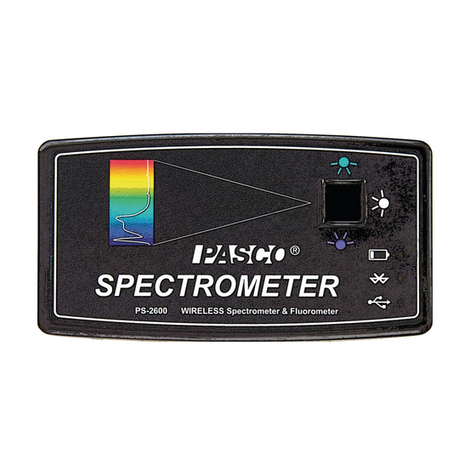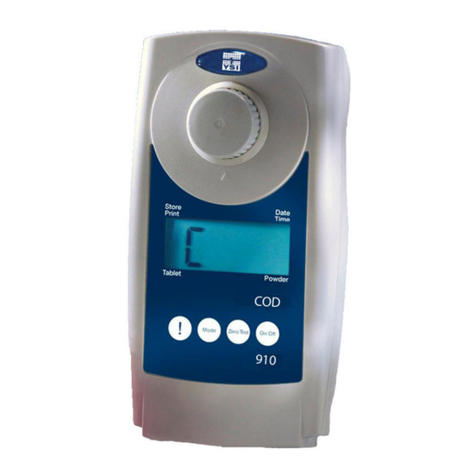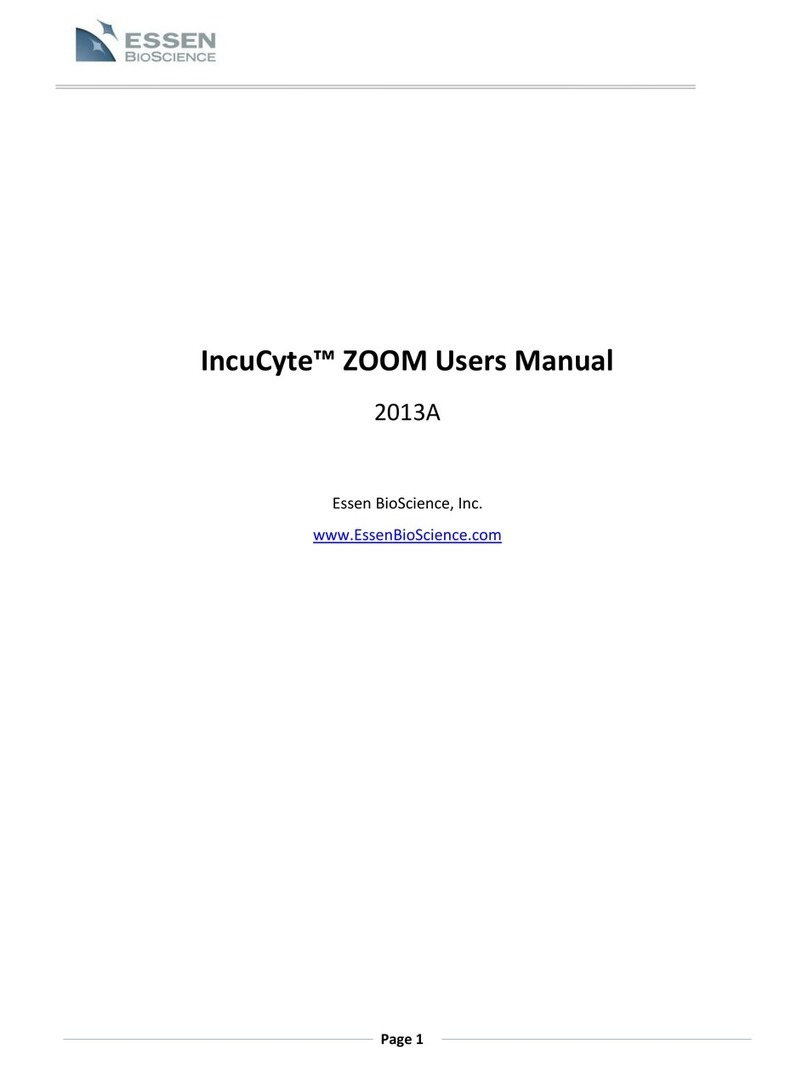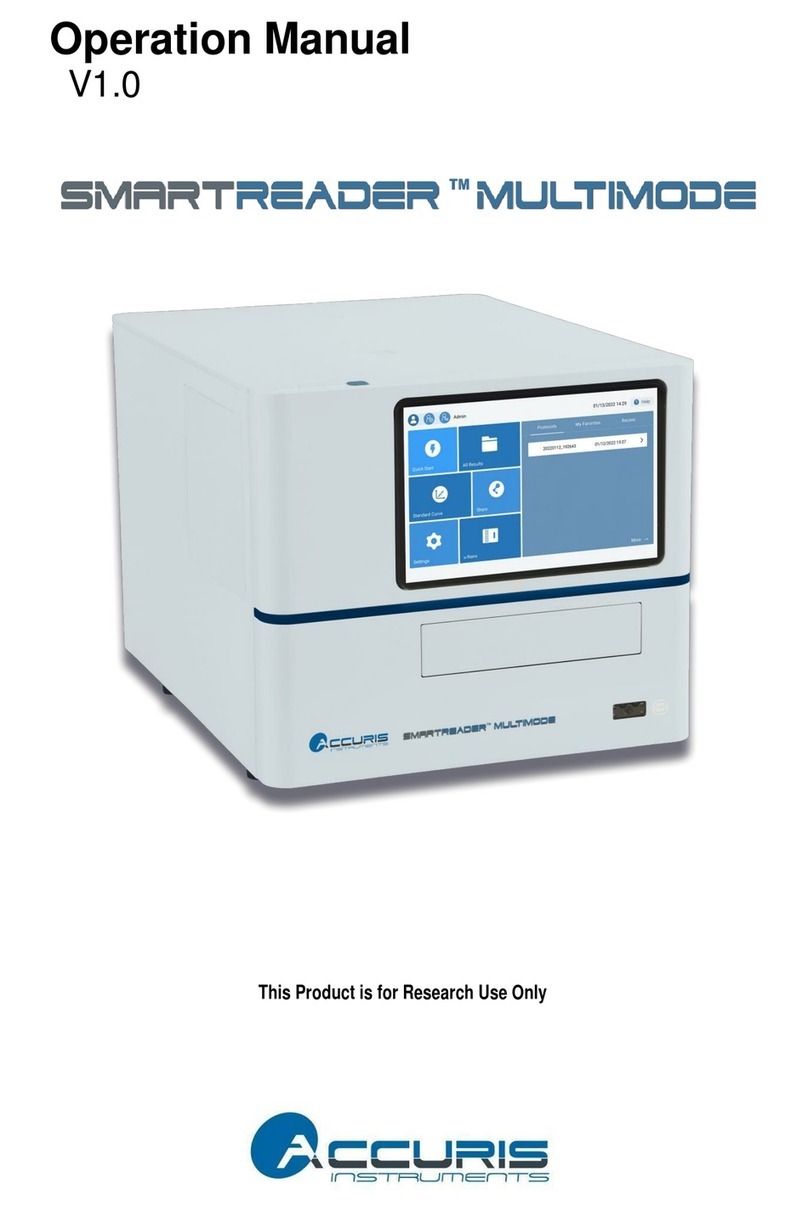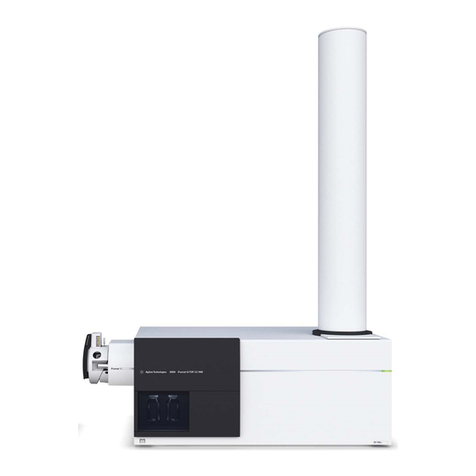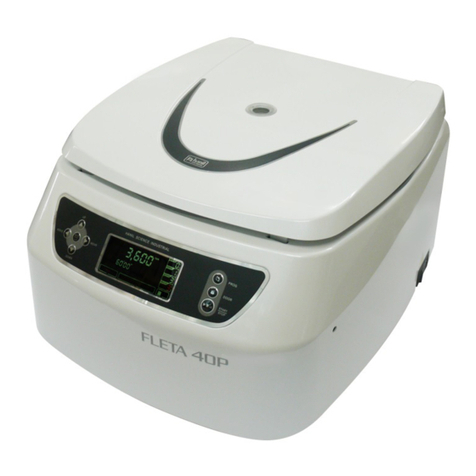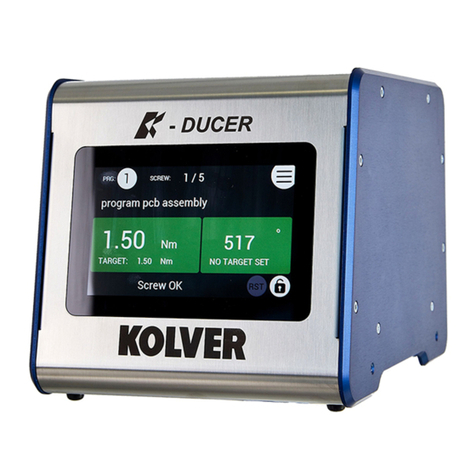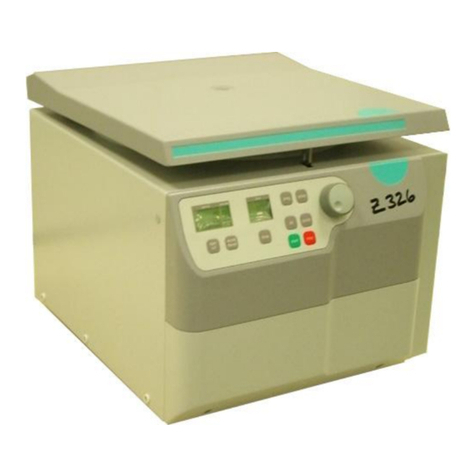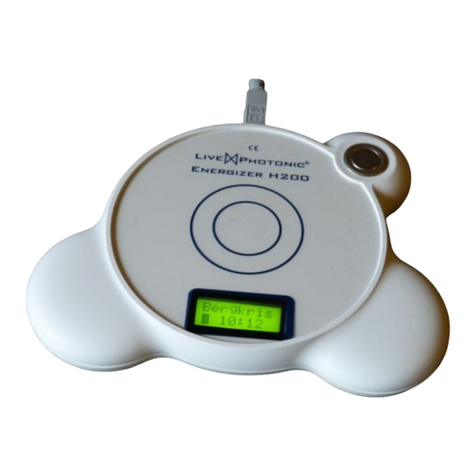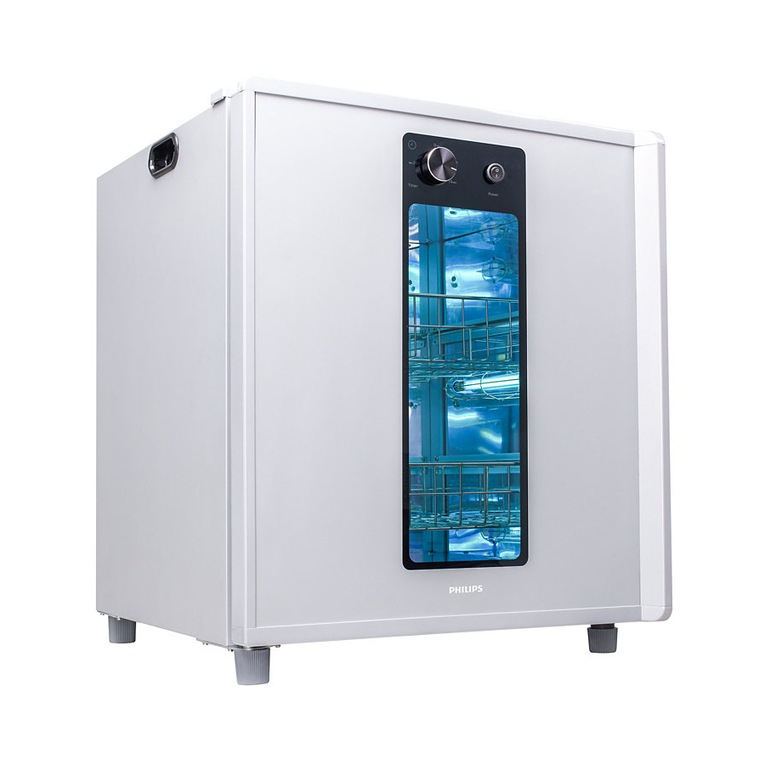FISBA READYBeam Owner's manual

Technical Instruction
FISBA READYBeamTM
Compact multi-wavelength laser source
January 2020


Content
1 Safety 4
1.1 Explanation of symbols 4
1.1.1 General safety instructions 4
1.1.2 Laser safety 4
1.1.3 Laser area 4
1.2 Sécurité 6
1.2.1 Explication des symboles 6
1.2.2 Consignes de sécurité générales 6
1.2.3 Sécurité du laser 6
1.2.4 Zone laser 6
1.3 Warning and information labels 8
1.4 Correctandspecieduseoftheunit 8
1.5 Warranty conditions 9
1.5.1 Limits of the warranty 9
2 Technical system 9
2.1 Laser module 9
2.2 Installation and commissioning 10
2.2.1 Unpacking and checking for visible damage 10
2.2.2 Installation 10
2.2.3 Operating the FISBA READYBeamTM 10
2.2.4 Digital operating with the software application 10
2.2.5 Software interface 11
2.2.6 Analog controlled operation 11

4
1 Safety
1.1 Explanation of symbols
This symbol is used for all points in these operating instructions to which special
attention is to be paid so that all directives, regulations, instructions and the correct
work sequence are observed, and to prevent minor or serious damage to the laser
system or plant.
1.1.1 General safety instructions
The operating instructions and the safety instructions are to be read and observed
prior to installation and commissioning! The operating instructions must be read,
understood and followed by the operators responsible for the unit. Along with the
in structions in these operating instructions, also observe the generally applicable
safety and accident prevention regulations! All work on installation and commissioning
as well as all maintenance is to be performed by appropriately qualied personnel.
National accident prevention regulations, EN and IEC standards are to be observed.
Appropriately qualied personnel in the context of these basic safety instructions are
persons who are familiar with the tting, installation, placing in operation and operation
of the product and have qualications appropriate to their task.
1.1.2 Laser safety
The unit is a class 3B laser device. Both the direct beam and its reections from
di ffuse reective surfaces are dangerous.The unit emits strong power beams in the
visible spectral range (approx. 400 nm to 700 nm, for more detailed information see
the data sheet, page 14). The radiation can cause irreversible damage to the eyes if the
necessary protective measures are not taken.
1.1.3 Laser area
The laser area is the area in which the values for the maximum permissible irradiation
can be exceeded. Here the possibility of unintentional deection of the laser beam is
also to be taken into account. If operational equipment other than that given in this
manual or another procedure is used, dangerous exposure to the radiation may result.
Laser system screened inside a protective cover
By using suitable screening it can be ensured that people are not exposed to the laser
radiation. In this way the laser class is reduced and it is possible to work with the
closed arrangement without additional limitations or further measures.

5
However, in this case the following requirements apply to the protective cover:
· The protective cover must be appropriate to adequately shield the laser
radiation. It is therefore necessary to use laser safety glass or laser safety
lm for viewing windows.
· The cover itself as well as any doors or aps in the cover must be protected
using the interlock circuit that automatically shuts down and inhibits the laser
immediately on intentional or unintentional opening.
If the interlock circuit is disabled for service or maintenance work on the system with
the cover open, the laser area is enlarged again and the regulations in the next section
«Presence of persons in the laser area» apply.
Presence of persons in the laser area
In the laser area, people are subject to hazards, in particular ocular. Therefore the
follow ing measures must be taken and the following safety regulations observed:
· The room must have an emergency exit.
· The room must be optically screened from the environment (e.g. laser safety
lm on the windows).
· The laser area is to be kept as small as possible, to be bounded by suitable
screening and protected against access by unauthorized persons. The num-
ber of persons in the laser area should be reduced to the minimum.
· There must be a warning device on all entrances to the room that indicates
the laser radiation hazard.
· If the entry doors are not protected using the interlock circuits, opening the
doors easily from the outside must be impossible to prevent thoughtless
entry.
· All persons who are in the laser area during operation must be informed
about the dangers of the laser radiation.
· Laser safety glasses/goggles must be worn in the laser area. The operating
organisation must ensure that suitable safety glasses/goggles are available.
The glasses/goggles are selected in accordance with DIN EN 207. Please see
the data sheet on the unit for the actual wavelength of your laser. Herein-
after, the term safety glasses is always used to refer to suitable laser safety
glasses/goggles. Caution: in some circumstances your laser safety glasses/
goggles may not protect you from a powerful red pilot beam.
· There must not be any potentially explosive substances in the laser area.
Easily inammable substances may catch re.
· Glossy reective equipment must be either removed from the laser area or
covered. Windows and reecting walls are also to be covered with material
with low inammability.

6
1.2 Sécurité
1.2.1 Explication des symboles
Dans ce mode d’emploi, ce symbole indique qu’une attention particulière est requise,
an d’observer l’ensemble des directives, réglementations et consignes, ainsi que la
séquence de travail correcte pour éviter tous dommages mineurs ou importants au
système laser ou à l’installation.
1.2.2 Consignes de sécurité générales
Le mode d’emploi et les consignes de sécurité doivent être lus et observés rigou-
reusement avant l’installation et la mise en service. Les opérateurs responsables de
l’unité doivent lire, comprendre et suivre le mode d’emploi. Outre les consignes de
ce mode d’emploi, il convient également d’observer les réglementations relatives à la
sécurité et à la prévention des accidents applicables en général. L’installation, la mise
en service et l’entretien doivent être réalisés par un personnel qualié de manière
appropriée. Les réglementations nationales concernant la prévention des accidents
et les normes EN et CEI doivent être observées. Dans le cadre de ces consignes de
sécurité élémentaires, le personnel dûment qualié désigne des personnes qui ont
des connaissances en montage, installation, mise en service et fonctionnement du
produit et qui ont les qualications appropriées.
1.2.3 Sécurité du laser
L’unité est un dispositif laser de classe 3B. Le faisceau direct et les réexions des
surfaces rééchissantes diffuses sont dangereux. L’unité émet des faisceaux de
forte puissance dans le domaine spectral invisible, visible et infrarouge (environ
400 nm - 700 nm, voir che technique pour en savoir plus, page 14). Le rayonnement
peut endommager les yeux de manière irréversible, si les mesures de protection
nécessaires ne sont pas correctement appliquées.
1.2.4 Zone laser
La zone laser est la zone dans laquelle les valeurs du rayonnement maximum autorisé
peuvent être dépassées. La possibilité d’une déviation accidentelle du faisceau laser
doit également être prise en compte.
Si un autre équipement que celui indiqué dans ce manuel ou une autre procédure est
utilisé, une exposition dangereuse au rayonnement peut avoir lieu.

7
Système laser protégé dans une enceinte
Une protection adaptée garantit que les personnes ne sont pas exposées au rayon-
nement laser. Ainsi, la classe du laser est baissée et il est possible de travailler avec la
conguration fermée, sans limitations ou mesures supplémentaires.
Toutefois, dans ce cas, les exigences suivantes s’appliquent à l’enceinte de protection:
· L’enceinte de protection doit être adaptée de sorte à enfermer correctement
le rayonnement laser. Il est donc nécessaire d’utiliser un verre ou un lm de
sécurité laser pour les fenêtres.
· L’enceinte, ainsi que les portes ou volets doivent être équipés d’un circuit
de verrouillage, qui éteint automatiquement le laser, en cas d’ouverture
volontaire ou non.
Si le circuit de verrouillage est désactivé pour l’entretien ou la maintenance du systè-
me avec l’enceinte ouverte, la zone laser est élargie et les instructions de la section
suivante «Présence de personnes dans la zone laser» s’appliquent.
Présence de personnes dans la zone laser
Toute personne se trouvant dans la zone laser s’expose à des risques, notamment
oculaires. Il convient donc de prendre les mesures nécessaires suivantes et d’ob-
server les dispositions de sécurité qui suivent:
· La pièce doit avoir une issue de secours.
· La pièce doit être protégée (p. ex. lm de sécurité laser sur les fenêtres).
· La zone laser doit être réduite au minimum, délimitée par une protection
adaptée et protégée contre tout accès non autorisé. Le nombre de person-
nes présentes dans la zone laser doit être réduit au minimum.
· Un dispositif d’avertissement doit être installé au niveau de toutes les ent-
rées de la pièce, pour signaler clairement les risques du rayonnement laser.
· Si les portes d’accès ne sont pas protégées au moyen de circuits de verrou-
illage, leur ouverture depuis l’extérieur doit être impossible, an d’empêcher
toute entrée inconsidérée.
· Toute personne se trouvant dans la zone laser, pendant le fonctionnement de
l’unité doit être informée des dangers du rayonnement laser.
· Le port de lunettes de protection laser est obligatoire pour toutes les per-
sonnes dans la zone laser. L’organisation opérationnelle doit veiller à mettre
à disposition des lunettes de protection adaptées. Les lunettes sont choisies
conformément à la norme DIN EN 207. Reportez-vous à la che technique
de l’unité pour connaître la longueur d’onde réelle de votre laser. Les termes
«lunettes de protection» utilisés ci-après font toujours référence aux lunettes
de protection laser adaptées. Attention : dans certains cas, vos lunettes de
protection laser peuvent ne pas vous protéger correctement contre un puis-
sant faisceau pilote rouge.
· Il ne doit pas y avoir de substances potentiellement explosives dans la zone
laser. Les substances facilement inammables peuvent facilement prendre feu.

8
· Les équipements brillants et rééchissants doivent être enlevés de la
zone laser ou recouverts de manière appropriée. Les fenêtres et les murs
rééchissants doivent également être recouverts d’un matériau de faible
inammabilité.
1.3 Warning and information labels
The following warning labels are tted to laser and processing head:
VISIBLE LASER RADIATION
AVOID EXPOSURETO BEAM
CLASS 3B LASER PRODUCT
λ[nm]
400– 410
486– 490
632– 643
EN 60825-1:2014
max. power [nW]
210
55
155
VISIBLE LASER RADIATION
AVOID EXPOSURETO BEAM
CLASS 3B LASER PRODUCT
λ[nm]
440– 460
515 – 530
625– 664
EN 60825-1:2014
max. power [nW]
110
70
105
This product does not confirm to
21CFR 1040 and EN 60825-1,
it is intended to be integrated in
OEM equipment only.
Laser radiation.
Avoid direct exposure to Beam
400 – 700 nm
Max. 300 mW
Class 111b
laser product.
DANGER
1.4 Correctandspecieduseoftheunit
It is forbidden to commission the laser system until it has been ensured that the
ma chine or plant in which the laser system has been tted complies with the appli-
cable safety regulations. The organisation operating the plant is solely liable for any
damage caused by incorrect use of the unit. The organisation operating the system is
respon sible for the correct conditions in relation to operation, maintenance and repair.
The only personnel to be tasked with operation, maintenance and repair are personnel
who have been adequately instructed in the function of the laser system and who
have also been instructed specically on the dangers and risks of incorrect handling of
the system.

9
1.5 Warranty conditions
The warranty period is 12 months from delivery. The warranty covers the entire laser
module. The warranty will become void on the
·unauthorized opening of the unit‘s components
·operation of the unit in an unauthorized con guration
·improper use, storage or transport (e.g. vibration, temperature shock, the
action of frost)
1.5.1 Limits of the warranty
No warranty of the suitability of the product for speci c applications is provided.
FISBA is not liable for indirect, direct or consequential damages caused by the use of
this product.
2 Technical system
The laser module emits laser radiation with different wavelengths. Combination of
different laser diodes can emit radiation in the UV, VIS and/or NIR range. The correct
combination is documented within the data sheet, see page 14.
2.1 Laser module
Dimensions of the laser module in mm:
77 40
37
10 64
5
30
2.9
A
A
01
20 19
02
Pin assignment Samtec SFSD-10-28G24.00SR
01
VIN red N
11
RS485B
02
VIN red P
12
RS485A
03
VIN green N
13
GND
04
VIN green P
14
GND
05
VIN blue N
15
GND
06
VIN blue P
16
GND
07
GND
17
+12V...+24V
08
Enable red
18
+12V...+24V
09
Enable green
19
+12V...+24V
10
Enable blue
20
+12V...+24V
CAD-System: SolidWorks
00.237.83-010
SAP Material:
A4
Format
Format
www.fisba.com
1:1
Massstab
/ Scale
Werkstoff
Material
Änderungs-Nr.
Revision no.
Benennung
/ Description
1 / 1
Blatt / Anz
Sheet / no. of
Zeichnungs-Nr.
/ Drawing no.
Freigegeben
Approved
Erstellt
Prepared
READYBeam BIO
Streng vertraulich. Alle Rechte vorbehalten. Die Vervielfältigung
und die Verarbeitung mit elektronischen Systemen ist ohne
schriftliche Genehmigung der FISBA AG nicht gestattet.
Revision
Revision
+
E-18006
Gewicht
Weight
130.13 g
Geändert
Modified
Strictly confidential. All rights reserved. Reproduction and
processing of data in electronic systems or in any form whatever
is not permitted without written authority of FISBA AG.
Status
Status
in Bearbeitung
Oberfläche
Surface
Dimension nach Oberflächenbehandlung
Dimensions after surface treatment
Kanten gebrochen 0.1...0.2x45°
Edges chamfered 0.1...0.2x45°
Allgemeintoleranzen nach ISO2768-fH
General tolerances according to ISO2768-fH
Toleranz-Grundsatz nach ISO8015
Tolerancing ISO8015
Alle Masse in mm
All dimensions in mm
Connector: Samtec SFSD-10-28G24.00SR
Pin assignment: documented in the appendix (Table 1 on page 12)

10
2.2 Installation and commissioning
Note that the laser module with electronic driver is not a product for direct use.
Security elements, such as interlock, and emergency switch are not included in
the laser module. If the laser module is used as part of system or product, then the
responsibility for safety lies with the product development team of the product.
When operating the laser module, the laser safety regulations must be observed.
2.2.1 Unpacking and checking for visible damage
Check the completeness of the delivery and check that all the items supplied are in
good condition. In case of errors please contact FISBA AG (readybeam@sba.com).
If possible, keep the packaging in which the laser system was supplied. It will then
be possible to pack the unit in its original packaging and transport it safely in case of
repair.
2.2.2 Installation
The laser module can be mounted with screws on a at bottom plate. The bottom
plate should be cooled and the heat transfer should be at least 7W to hold the module
on a stable operating temperature. The laser module READYBeam is TEC-controlled.
Incorrect cooling effects the laser power and can destroy the laser diodes. During
assembly of the laser module on a plane cooling surface, attention is required so that
no tension can apply to the casing. Tension inuences the beam quality very strongly.
The connection must be handled carefully.
2.2.3 Operating the FISBA READYBeamTM
· The safety regulations must be carefully observed
· A power supply between +12 and +24V with max. 4 Ampere is needed
to start the READYBeam
· FISBA READYBeamTM can be started digital with the software application
and RS485 interface or analog based controlled
2.2.4 Digital operating with the software application
· Visit sba.com/readybeam-software to download the software
· Unpack the les from downloaded folder
· Start «RGB Service Software Setup.msi» and follow the
installation instructions
· You need an USB - RS485 interface cable for the digital operating mode
See the details in the appendix (Figure 1 on page 13)

11
· Connect the USB plug to your laptop and the RS485 plug to the laser module
interface cable
· Connect the power supply to the interface cable
· Connect the interface cable to the laser module connector
· Start the READYBeam software
· Now it is possible to control the lasers via the software
2.2.5 Software interface
1. Set Modulation Mode: choose «Digital»
2. Set Power Value 1 (red), Power Value 2 (green) and Power Value 3 (blue):
values in % of the max. laser power
3. Switch the Laser on/off with Digital Enable 1, 2 or 3
4. Enter the command with «WriteCong»Button
The READYBeam software is provided for download at
sba.com/readybeam-software
2.2.6 Analog controlled operation
· Connect the power supply and signals according the pin conguration on
Table 1, page 12
· Connect the Interface cable at READYBeam
· Switch ON +12/+24V Power

12
Appendix
Pin conguration and power values
Connector: Samtec SFSD-10-28G24.00SR
Enable Laser: low = 0V, high = 3.3V
Analog In: 0V … 3.3V --> 10% ...100% of Laser power
Power: +12V … + 24V max. 4A
Pin 1 is marked on the connector with arrow (not notch)
Pin 1 Analog In- Laser red
Pin 2 Analog In+ Laser red
Pin 3 Analog In- Laser green
Pin 4 Analog In+ Laser green
Pin 5 Analog In- Laser blue
Pin 6 Analog In+ Laser blue
Pin 7 Gnd
Pin 8 Enable Laser red
Pin 9 Enable Laser green
Pin 10 Enable Laser blue
Pin 11 RS 485 B
Pin 12 RS 485 A
Pin 13 Gnd
Pin 14 Gnd
Pin 15 Gnd
Pin 16 Gnd
Pin 17 Power +12V … +24V
Pin 18 Power +12V … +24V
Pin 19 Power +12V … +24V
Pin 20 Power +12V … +24V
Table 1

13
USB
RS-485
Power
RS-485
Module
PowerPower supply
Electric
Cable
Figure 1

14
Data sheet FISBA READYBeamTM
Technical Specications
Technical Specications
FISBA READYBeam™
2019 November , all rights reserved
Optical parameters bio ind
Wavelengths 405 nm 488 nm 638 nm 450 nm 520 nm 660 nm
Min. optical power from
ber ≥ 40 mW ≥ 30 mW ≥ 40 mW ≥ 40 mW ≥ 30 mW ≥ 40 mW
NA ber 0.12
Laser class 3B
Fiber connector FC/APC
Fiber type Single-mode with or without polarization maintaining properties
Electrical parameters
Power supply 12 V ... 24 V
Modulation ON / OFF Enable up to 1 MHz
Set power input bandwidth up to 20 kHZ (0..3.3 V -> 10%..100% )
Operation mode cw / modulated
Digital interface RS 485 (ON / OFF Modulation up to 100 Hz)
Mechanical parameters
Dimensions
length x width x height 77 mm x 40 mm x 37 mm
Weight ≤ 200 g
Environmental conditions
Operation temperature 15°C – 40°C
Storage temperature -10°C … +60°C
Thermal properties TEC controlled
Heat dissipation ~ 7 watts
PRELIMINARY
FISBA AG
9016 St.Gallen, Switzerland
FISBA LLC
Tucson, AZ 85712, United States
FISBA Photonics GmbH
12489 Berlin, Germany
sales@sba.com
www.sba.com

15

FISBA AG
FISBA Photonics GmbH
FISBA LLC
FISBA (Shanghai) Co., Ltd.
Rorschacher Str. 268
9016 St.Gallen
Switzerland
Schwarzschildstrasse 10
12489 Berlin
Germany
6296 E.Grant Rd Suite 150
Tucson, AZ 85712
United States
9F-4
World Square Building, No. 855
Pudong South Rd.
Shanghai
China
sba.com | readybeam@sba.com
Table of contents
Languages:
Popular Laboratory Equipment manuals by other brands

Yamato
Yamato RT200 instruction manual
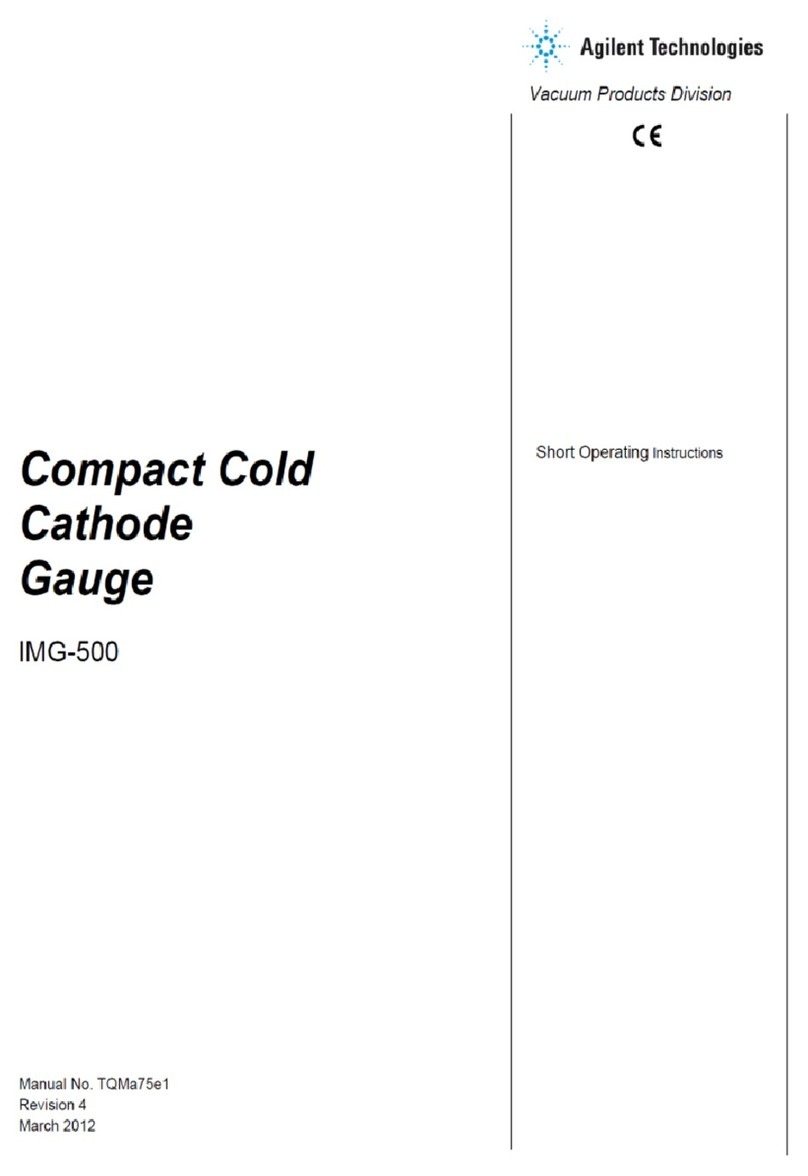
Agilent Technologies
Agilent Technologies IMG-500 manual

BioLAB
BioLAB BODR 100 Series Operation manual
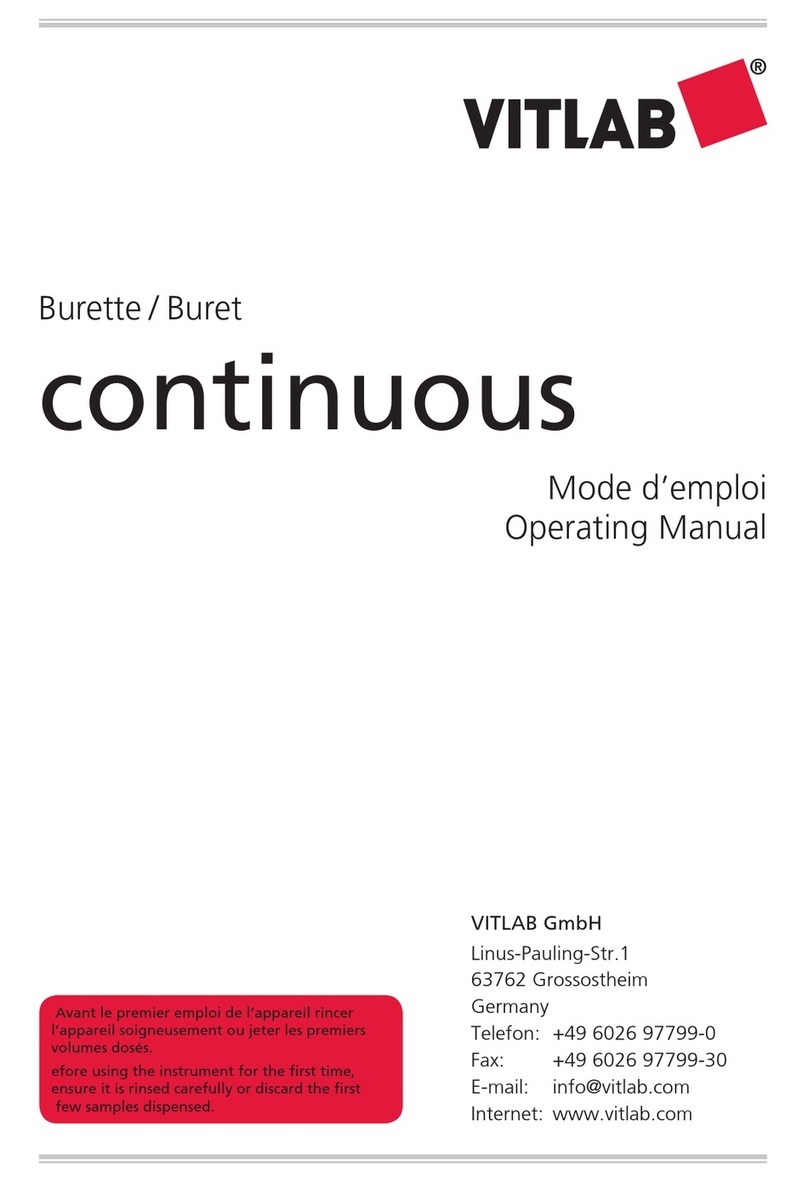
Vitlab
Vitlab continuous E operating manual
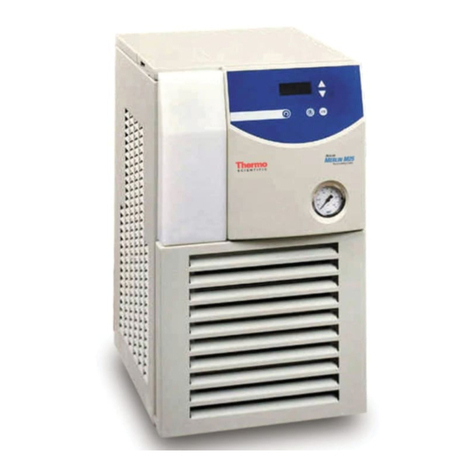
Thermo Scientific
Thermo Scientific Neslab Merlin M 25 Installation, Operation, Basic Maintenance
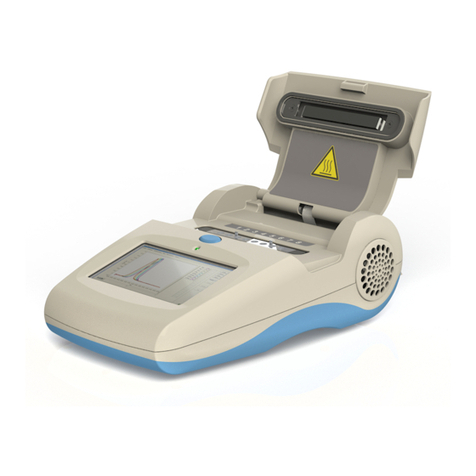
Optigene
Optigene Genie III user manual

